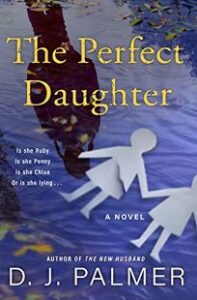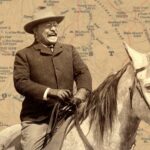The secret to an enduring structure is a solid foundation. While this engineering principle applies to homes and office towers, it’s also applicable to those wanting to write great books. In my twelve-plus years working as a commercial fiction writer, I’ve returned repeatedly to four pillars, which create a platform capable of supporting a novel’s weight. Without these structures in place, a book may feel thin and contrived, or worse, boring. The sturdier the pillars, the better the book. In order of importance, here are the four essential foundational elements of fiction writing and accompanying books that exemplify each pillar.
1. A Big Idea
Picking a topic is the first major hurdle. It’s not enough to say you’re writing a police procedural or a domestic drama. What specific crime are we exploring? What unique situation is the launch point for a robust narrative? In the blockbuster novel, The Da Vinci Code, author Dan Brown asks whether history books are completely factual. His big idea was to take commonly known stories related to art and religion and suggest a reinterpretation of those events. Brown had a mind-bending tale on his hands before he came up with plot or characters because he selected a big idea that lent itself to playing with people’s perceptions. Big ideas come in many different forms. They can be cerebral, as in the psychology of insanity (The Silence of the Lambs by Thomas Harris). Some may be morally focused, such as examining the nature of justice (And Then There Were None by Agatha Christie). Likewise, big ideas can come from a setting, too, for instance, the world of competitive cheerleading (Dare Me by Megan Abbott). With the big idea in place, an author may turn attention to the next pillar in story structure, further clarifying the direction the narrative will take.
2. The “What If?”
The “What If” question is a sentence or two, describing a book to the publisher, an interviewer, or anyone else who asks. In short, it is the elevator pitch. But it’s also much more. When the author has a great, clear, tightly-focused question in mind, it makes writing the book—essentially answering the “what if” question—that much easier. A strong “what if” can also be the hook that captures a reader’s imagination from the outset. What if, in order to get your kidnapped child back, you had to kidnap another child? Adrian McKinty asked himself this unsettling question before writing The Chain, and the answer turned out to be one of the most propulsive thrillers in recent memory. Sometimes a what-if question isn’t something an author would want to share because it gives away too much of the plot. Such is the case with Gillian Flynn’s phenomenal, Gone Girl, which asked: What if a wife sets up her husband to become the prime suspect in her disappearance? The rest of the book offers a compelling exploration of that question that kept millions of readers in its grip.
This leads us to pillar number three…
3. Choose your protagonist
Dying is easy, character is hard. Finding a memorable protagonist is one of the most significant challenges for any fiction writer. There are reasons readers gravitate to Karin Slaughter’s Will Trent or Lisa Gardner’s D.D. Warren, or to the books of Tess Gerritsen, best known for her beloved Rizzoli and Isles series. Protagonists such as these have a relatability and vibrancy that helps them stand out from a crowded field of heroines and heroes. When it comes to characters who jump off the page, few can stand above Stieg Larsson’s Lisbeth Salander. Not only is her name memorable, she herself is an utterly original creation. She offers a counterpoint to feminine stereotypes and plays with expectations by being awkward and graceless, while simultaneously possessing a true talent for vengeance. Voice, conflict, motivation, and backstory are all essential ingredients for painting a vibrant character portrait, but a story’s protagonist must also serve the narrative, not the other way around. In The Girl with the Dragon Tattoo, Lisbeth didn’t seek out Blomkvist; she fought against a rapist to win back control of her life, which put her on a collision course with an investigation that would upend her existence. To survive, Lisbeth is forced to participate in Blomkvist’s investigation, and in so doing, she experiences a fundamental transformation. If you’ve wondered why some characters feel more compelling than others, now you know.
4. Answer the What If
Alfred Hitchcock is often credited with coining the term MacGuffin, a nonsense word that encapsulates the answer to a “what if” question. The MacGuffin is most often revealed in the final act of a thriller and is the holy grail of the story, the answer to what a protagonist seeks. MacGuffins can be surprising, but at times they can also be jaw-dropping—readers call this the twist!—as exemplified in, Shutter Island by Dennis Lehane. The novel, later made into a Martin Scorsese film starring Leonardo DiCaprio, asks the question: What if a police detective had to solve a murder inside an island insane asylum? A great character can make a reader turn the pages with varying degrees of emotional investment, but an ill-thought-out reveal, or perhaps worse, a pedestrian one, often leaves readers disappointed or discouraged. Writers who twist their MacGuffins into something memorable and unexpected (Behind Her Eyes by Sarah Pinborough, now a Netflix smash mini-series, is another excellent example) will have readers clamoring for more.
***
When used correctly in a solid narrative structure, these four pillars create a formidable platform on which to build a story. There are no shortcuts to creating thrilling fiction, and without a strong foundation, a book runs the risk of collapsing in on itself, much like a building unable to support its own weight. With the pillars in place, then plot, conflict, tension, and stakes take over, and it is up to the writer to pull their characters through the story and out the other side. Such is the case with my new psychological suspense novel, The Perfect Daughter, a tale about a teenage girl with a dissociative identity disorder, accused of a heinous crime. The answer to what the perfect daughter may or may not have done comes when the characters pass through the gauntlet of the story, only to face what many of my early readers have said is the most shocking twist of my writing career. Really, you think? The most shocking? I guess there’s only one way to find out.
***


















